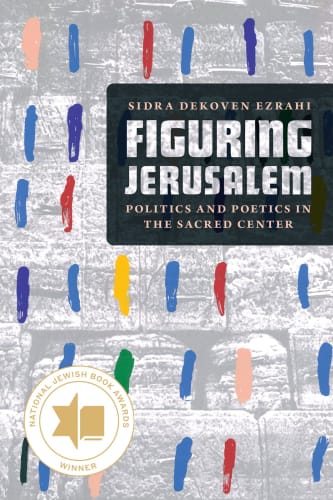
Figuring Jerusalem
Politics and Poetics in the Sacred Center
"For two thousand years, Hebrew writers imagined Jerusalem from a distance and used exile as a license for invention. The question at the heart of Figuring Jerusalem is this: how did these writers bring their imagination "home" in the Zionist century? Sidra DeKoven Ezrahi, one of our leading scholars of modern Jewish literature, explores the perils of this newly acquired proximity to a people's sacred and inherited resources. Ezrahi finds that the same diasporic procedures-cultic, ethical, and aesthetic-that Hebrew writers practiced in exile were maintained throughout the first half of the twentieth century, even in proximity to the Temple Mount, while Jerusalem was under the successive control of the Ottomans, the British, and then the Jordanians. After 1948, when the state of Israel was founded but East Jerusalem and its holy sites remained under Arab control, Jerusalem continued to figure in the Hebrew imagination as mediated space. But after 1967, all this changed. Over the next half century, the claim to exclusive sovereignty reignited a messianic fervor that had been suppressed in Hebrew culture for two millennia. The temptations and dilemmas of proximity to the sacred would become acute in every area of Hebrew politics and culture. Figuring Jerusalem ranges from classical texts, biblical and medieval, to the post-1967 writings of work of S. Y. Agnon, and the uncrowned poet laureate of Jerusalem, Yehuda Amichai. Ezrahi shows, ultimately, that the wisdom Jews acquired through two thousand years of wandering and exile, as inscribed in their literary imagination, must be rediscovered if the diverse inhabitants of this City are not to slaughter each other once again in the name of an exclusive and vengeful God"--
Figuring Jerusalem
Politics and Poetics in the Sacred Center
